Food was very popular today
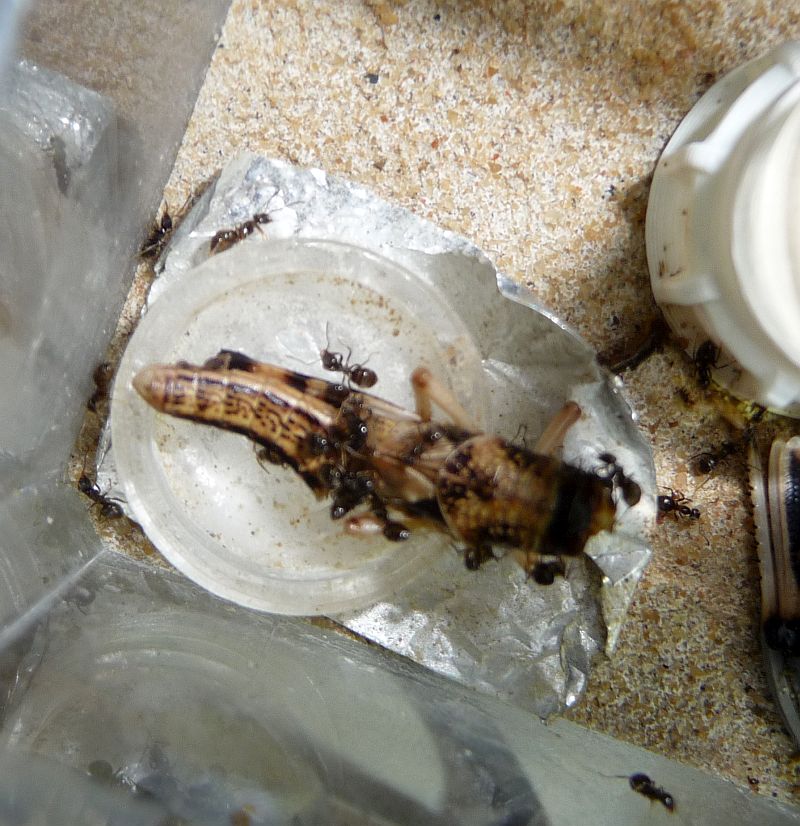

Food was very popular today

Since several people in the German Facebook group have started to make their Lasius colonies ready for winter, I also decided to clean up the top of the mini hearth and put them on the balcony, so they get used to colder nights. Climate right now is autumn, wet and windy, and temperatures are 13-17 degrees centigrade during the day and 6-10 degrees centigrade at night.
I placed the two colonies that need a real hibernation, the Lasius and the Temnothorax, in their hibernation box on the balcony, so they adapt to outside temperatures and get ready for winter.
The Lasius still have some brood.



I would recommend waiting until all pupae eclose, as larvae are the only brood which can overwinter well. If all pupae eclose and the larvae stop developing, that is a good sign they are ready for hibernation.
"God made..... all the creatures that move along the ground according to their kinds (including ants). And God saw that it was good. Genesis 1:25 NIV version
Keeping:
Tetramorium immigrans Camponotus vicinus, modoc, novaeboracensis, herculeanus
Formica pallidefulva, argentea Solenopsis molesta
Formica cf. aserva Lasius brevicornis, neoniger
Good point.
Will get them back in during the day, or put them up so they get some indirect sunlight (if the sun is out, that is).
The colony is now out of hibernation.
They filled up the bifurcated mini-hearth to the brim, so I decided to gently move them to a normal mini-hearth.
This normal mini-hearth will then be connected to the XXL as soon as the ants have settled down.
I will post pictures of the final solution as soon as order has been restored.
Right now, the ants are still confused and unsure where to settle down, they have moved the queen and most of the brood down onto the water tower, however, there is still a large part of the colony who are sitting on top also with some larvae in tow. I will let them settle down now and they will also get some nice juicy pieces of grasshopper later.
I am very much looking forward to hooking up the XXL Minihearth- I bought both with vermiculite substrate, so it will look very organic when I connect them.
I think this colony has a great future.
Here is the "downstairs" part of the colony:
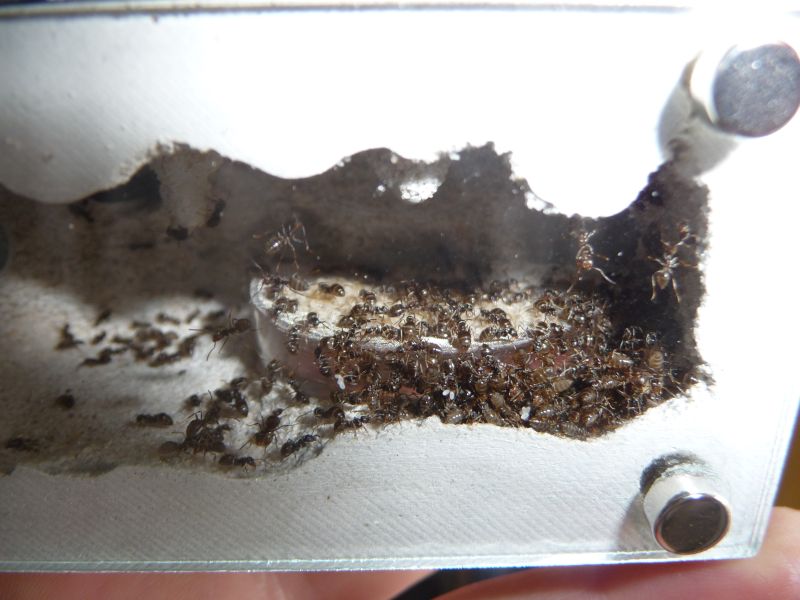
As you can see, they have moved most of the brood onto the water tower:
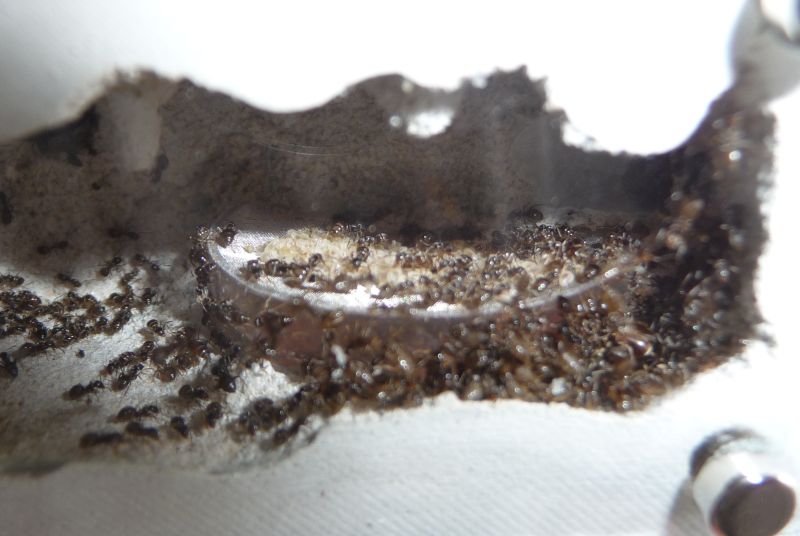
But half of the girls are still sitting on top and awaiting further orders:

The colony has settled down.
However, I realized that they still have some space to grow in the minihearth.
So I will wait a bit longer with connecting the expansion.
The way they are growing, this will not take long, though.
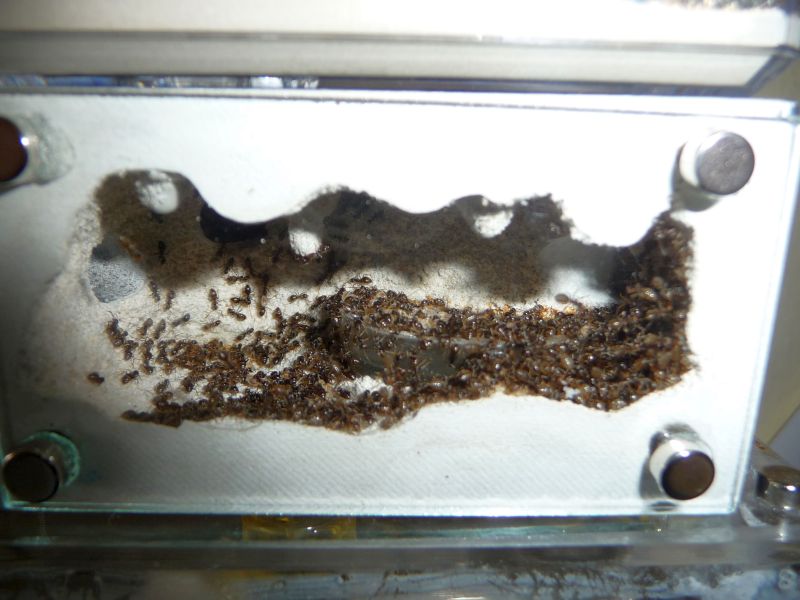
The queen is a machine and there are new eggs:
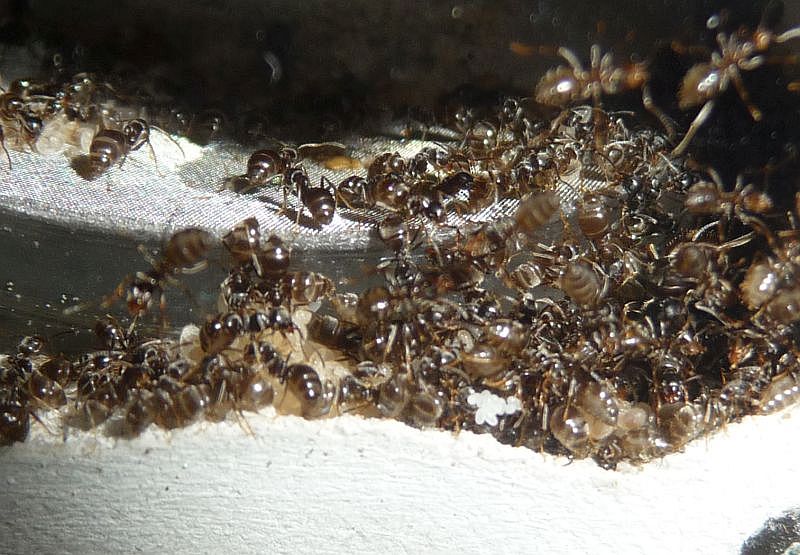
And there are tons of larvae:
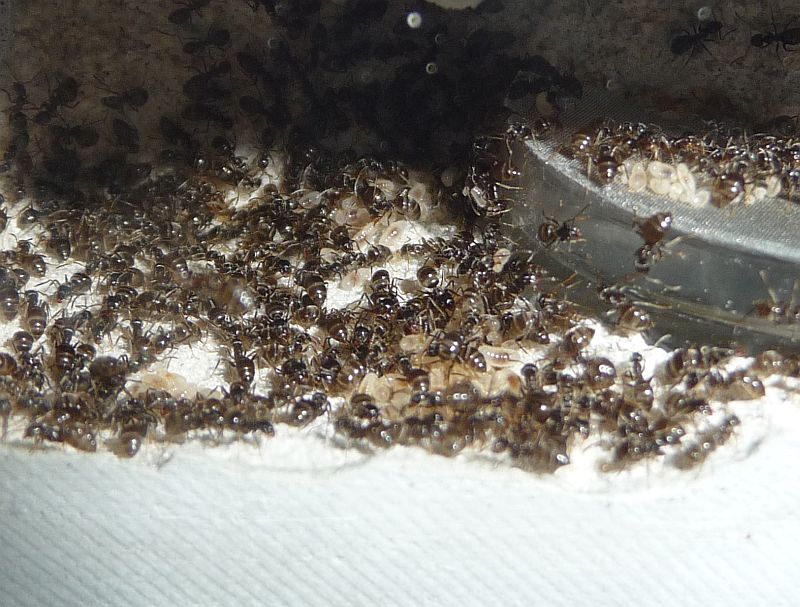
The expansion that is waiting for them:
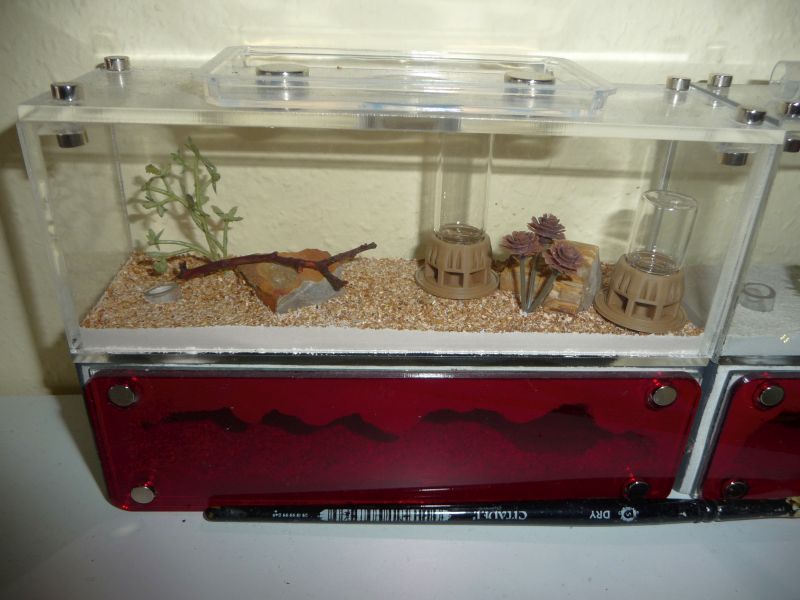
Wow this colony is nice!
For some reason my Lasius niger queen still has wings...but she has a colony of almost 1k now. Will she ever drop her wings at this point?
Manica invidia (1 queen, ~200 workers)
Manica invidia (1 colonies, 1 queens plus 3 workers)
Lasius niger (single queen, ~200 workers - naturalistic, predatory set-up)
Lasius americanus (1 colony, ~10 workers)
Tetramorium immigrans (3 colonies, 3 queens, ~ five workers each | 1 colony, 1 queen, ~1200 workers)
Formica aserva (aserva queen, ~15 Formica neorufibarbis workers)
"And God made...everything that creeps on the ground according to its kind.
And God saw that it was good." - Genesis 1:25
Wow this colony is nice!
For some reason my Lasius niger queen still has wings...but she has a colony of almost 1k now. Will she ever drop her wings at this point?
I am pretty sure that the workers will end up chewing them away, the queen herself will not drop them at this point.
Currently keeping:
1x Formica subsericea, 35-40 workers + maybe eggs
1x Crematogaster cerasi, only queen now, workers ded ![]() *internal screaming*
*internal screaming*
1x Myrmica ruba sp around 10 workers + pupa
*New* 1x founding Camponotus pennsylvanicus + eggs that die (probably infertile)
*New* 2x Camponotus nova, one is infertile
*As you watch your ants march, remember that every thing begins with a small step and continued by diligence and shared dreams*
-A.T (which is Me)
Wow this colony is nice!
For some reason my Lasius niger queen still has wings...but she has a colony of almost 1k now. Will she ever drop her wings at this point?
I am pretty sure that the workers will end up chewing them away, the queen herself will not drop them at this point.
I think so, too.
The wings will be in the way sooner or later, so workers will remove them.
Wow this colony is nice!
For some reason my Lasius niger queen still has wings...but she has a colony of almost 1k now. Will she ever drop her wings at this point?
I am really happy with this colony.
I am amazed how fast they are growing and how resilient they are.
All my other ants can be kind of divas (not eating certain things, stressing out, general sulking) but this colony just does not care. They eat everything, are not shy at all and during summer did not even mind me taking some pupa as food for my betta fish. They just carry on.
And this is a queen I just picked up from the parking lot at work! What a nice journey watching them from founding to now going into their second year.
This reminds me...
I think I never shared on here the slide from my ant talk where I show the fast development from queen to small colony in just 4 weeks time (the single individual pictures and their dates can be seen earlier in this journal, but this here is an overview of the 4 weeks of founding):
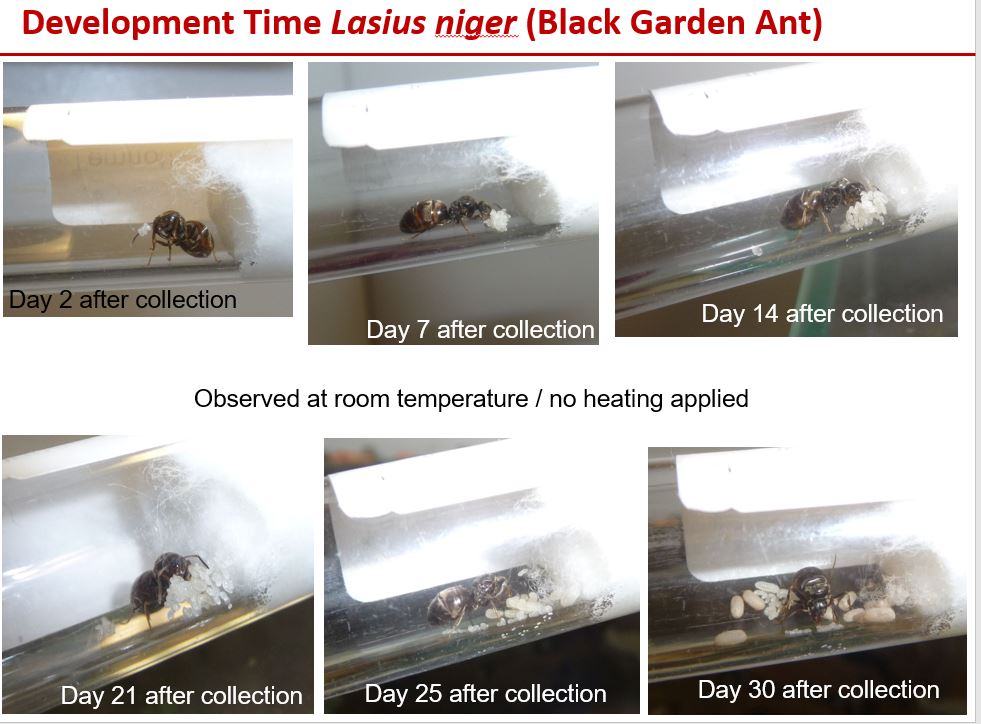
Today was the big day!!!
Many of the larva of this colony have now spun cocoons, so the next generation of workers is well on the way. In addition, there was an absolutely massive new pile of eggs.
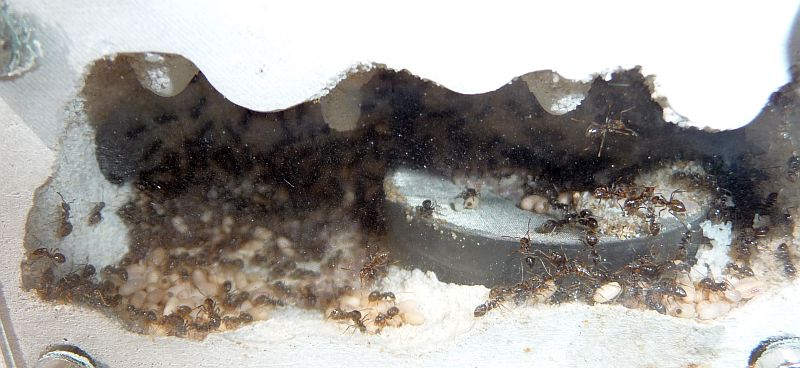

So I decided that today was as good a day as any to extend the territory of this colony!
Their new patio:
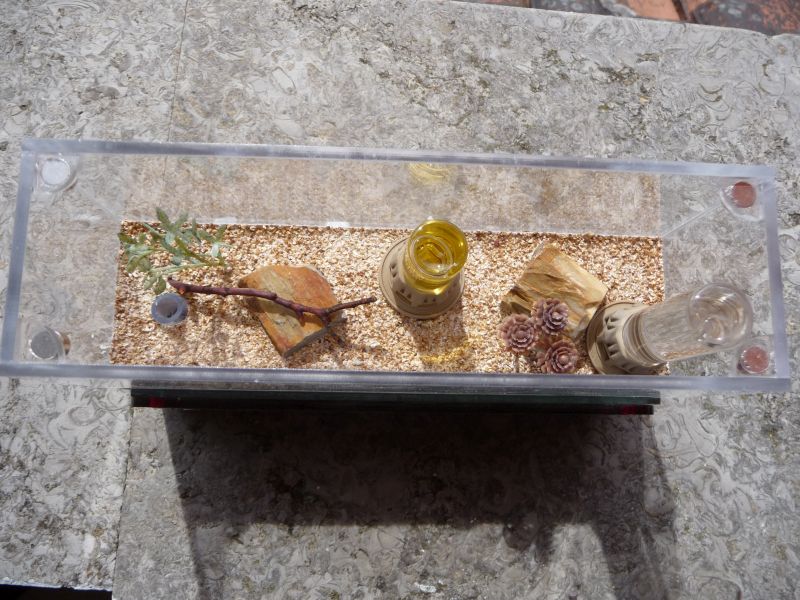
And the lounge area:
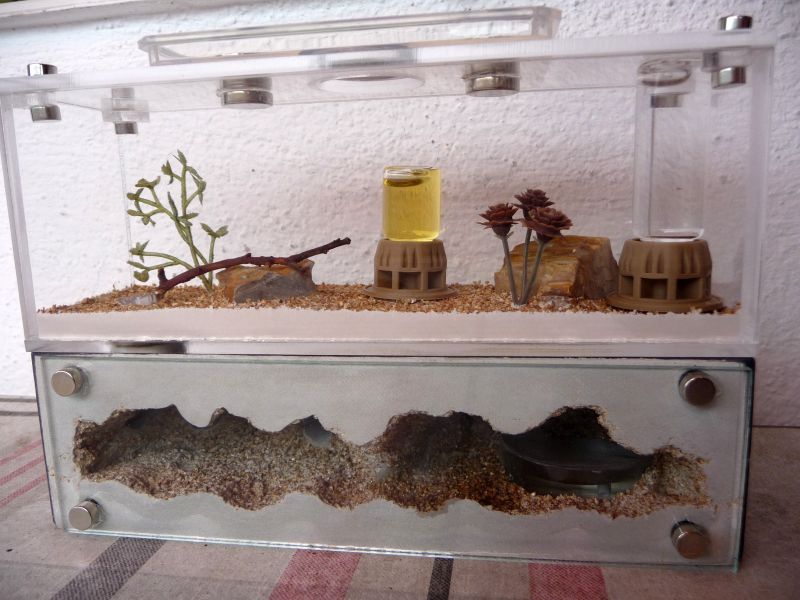
Since these Tarheel nests are modular with magnets, I just snapped the Mini Hearth directly to the XXL.
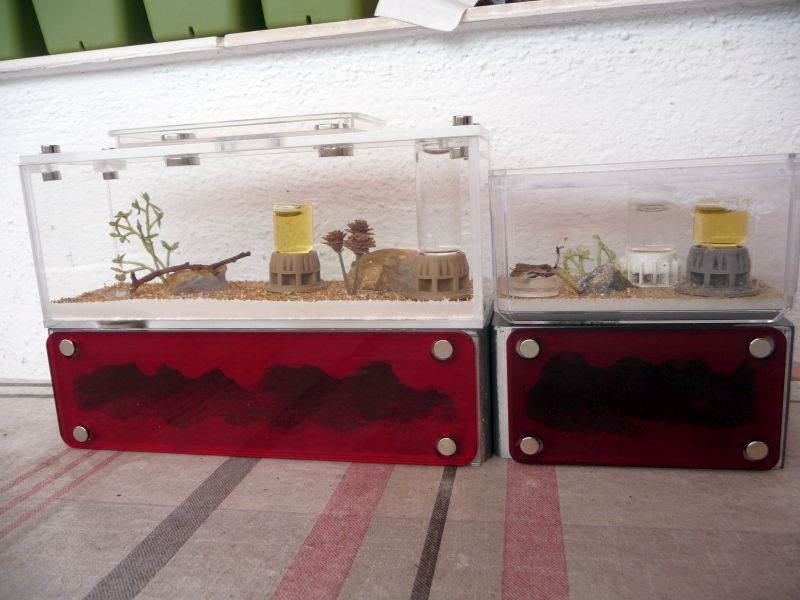
Only a few minutes later, the girls were already checking out the new flat.

And the first foragers were out exploring- this colony certainly does not wait around.
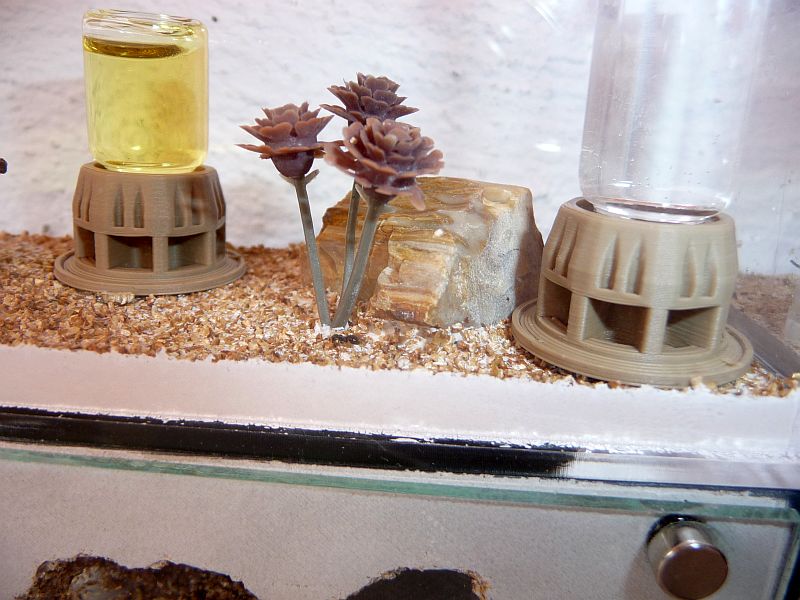
I have noticed that Lasius is particularly active in terms of foraging and exploring, even if they are a small colony. I feel like that is one of the beauties of this species.
Edited by OwlThatLikesAnts, April 16 2025 - 7:28 AM.
Currently keeping:
1x Formica subsericea, 35-40 workers + maybe eggs
1x Crematogaster cerasi, only queen now, workers ded ![]() *internal screaming*
*internal screaming*
1x Myrmica ruba sp around 10 workers + pupa
*New* 1x founding Camponotus pennsylvanicus + eggs that die (probably infertile)
*New* 2x Camponotus nova, one is infertile
*As you watch your ants march, remember that every thing begins with a small step and continued by diligence and shared dreams*
-A.T (which is Me)
I have noticed that Lasius is particularly active in terms of foraging and exploring, even if they are a small colony. I feel like that is one of the beauties of this species.
Yes, with them, there is always something going on. They are not lazy fat couch-potatoes like the Camponotus. These are girls of action!
I have noticed that Lasius is particularly active in terms of foraging and exploring, even if they are a small colony. I feel like that is one of the beauties of this species.
Yes, with them, there is always something going on. They are not lazy fat couch-potatoes like the Camponotus. These are girls of action!
I also feel like Formica sp are a mix between the two, fat and lazy but also quite active. I am also looking into raising a parasitic species of Lasius again this year, do you have any plans about parasitic species? I am asking that because once you fed their brood to your betta fish and it didn’t really change much about their behaviour (just the fact that they had less brood) so maybe if you find a queen you can give her your lasius colony’s brood to her.
Currently keeping:
1x Formica subsericea, 35-40 workers + maybe eggs
1x Crematogaster cerasi, only queen now, workers ded ![]() *internal screaming*
*internal screaming*
1x Myrmica ruba sp around 10 workers + pupa
*New* 1x founding Camponotus pennsylvanicus + eggs that die (probably infertile)
*New* 2x Camponotus nova, one is infertile
*As you watch your ants march, remember that every thing begins with a small step and continued by diligence and shared dreams*
-A.T (which is Me)
I have noticed that Lasius is particularly active in terms of foraging and exploring, even if they are a small colony. I feel like that is one of the beauties of this species.
Yes, with them, there is always something going on. They are not lazy fat couch-potatoes like the Camponotus. These are girls of action!
I also feel like Formica sp are a mix between the two, fat and lazy but also quite active. I am also looking into raising a parasitic species of Lasius again this year, do you have any plans about parasitic species? I am asking that because once you fed their brood to your betta fish and it didn’t really change much about their behaviour (just the fact that they had less brood) so maybe if you find a queen you can give her your lasius colony’s brood to her.
Well, in my youth I kept Formica polyctena (a species of wood ant) and I agree, they are very active, very interactive and very awesome. However, they are a protected species, so I cannot keep them anymore these days. Right now, I also have enough colonies to care for (and to observe and watch, I have a full time job after all).
Fun fact- at my parents house, they have a large lawn and that lawn has always been home to Lasius umbratus. That is the parasitic species that will subdue and conquer Lasius niger nests. When I was a child, I had always wondered why when I kicked the ant heaps in the lawn over (yes, children can be very mean, but I was also inquisitive, looking for brood) I had always wondered why there were yellow as well as black ants living in these hills. Were they indeed the same ants? My parents did not know. A few years later, during my ant adoring youth, I read a lot of books, so I learned about the fascinating truth behind these mixed ant nests.
Further fun fact- Lasius umbratus itself is victim of another parasitic founding species- Lasius fuloginosus. But those are ants you would not want in your house- they are a wood destroying species and if they escape, might move into the house to stay.....
If I wanted to, I would just have to wait for the nuptial flights in my home village and could collect parasitic queens.
But as I said, for now, I think I have enough colonies to care for, even if a parasitic species would be fascinating.
However, I will still be harvesting pupae from the growing Lasius colony later this season for my betta fish. This is just too good a deal to pass up- the bettas love it, and it will keep the colony manageable. So far, harvesting pupae, when not done too often, did not really stop this colony.
Edited by Ernteameise, April 16 2025 - 12:09 PM.
I’ve also heard that lasius umbratus is a parasite to its own species, though I’m not sure if it is Lasius aphidicola or umbratus
Currently keeping:
1x Formica subsericea, 35-40 workers + maybe eggs
1x Crematogaster cerasi, only queen now, workers ded ![]() *internal screaming*
*internal screaming*
1x Myrmica ruba sp around 10 workers + pupa
*New* 1x founding Camponotus pennsylvanicus + eggs that die (probably infertile)
*New* 2x Camponotus nova, one is infertile
*As you watch your ants march, remember that every thing begins with a small step and continued by diligence and shared dreams*
-A.T (which is Me)
The colony has moved into the new nest.
They have transferred some of their larva and pupa into the new nest. The queen stayed in the old nest.
And, since it is Easter- it is the time of eggs. So. Many. Eggs. Just look at the pile of new eggs in the background.
Here they are, in the new nest:
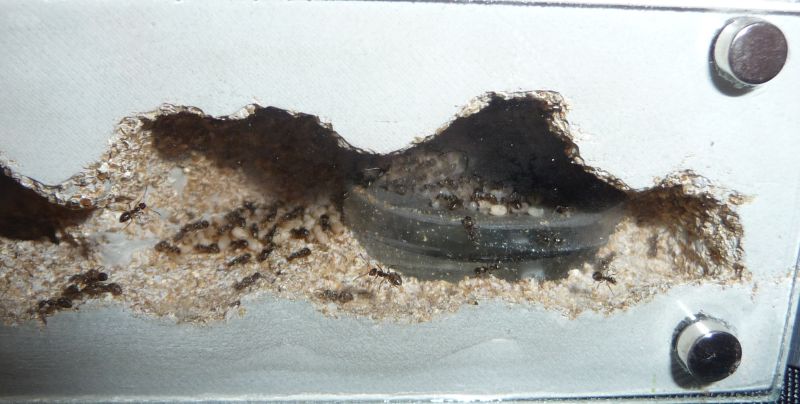
Close-up of the new settlement:
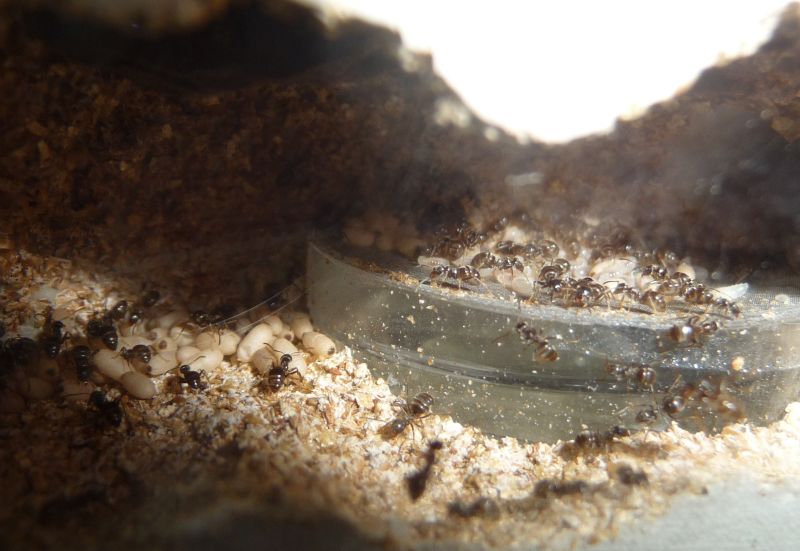
And here is the old nest, the mountain of new eggs is a sight to behold. Yes, that in the background. Tons of eggs.
I feel less bad about my plan to use some of the summer pupa as fish food.
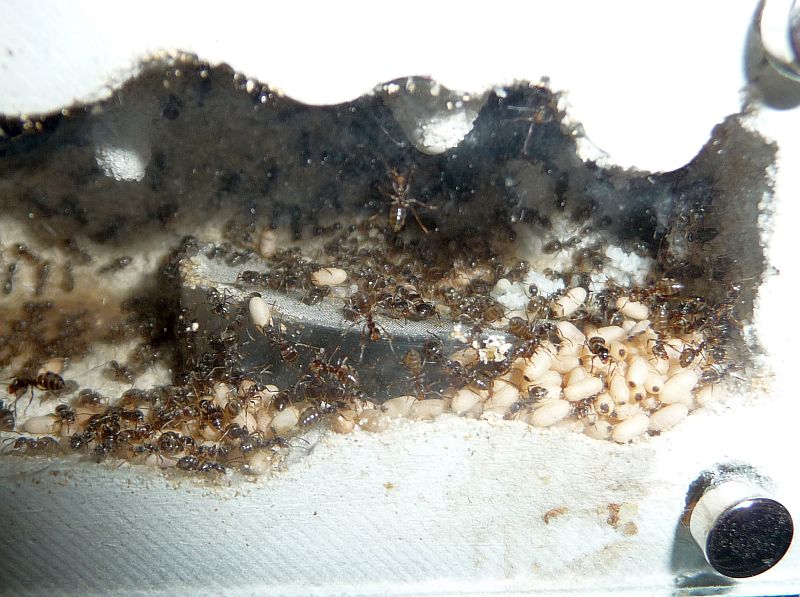
Colony growth and egg production is amazing
Here is the old part of the nest:

Mountains of eggs!

And they have settled down in the newly connected part of the nest.
Looks as if they keep eggs, smaller larvae and pupae in the old part of the nest,
and medium sized larvae in the new part.
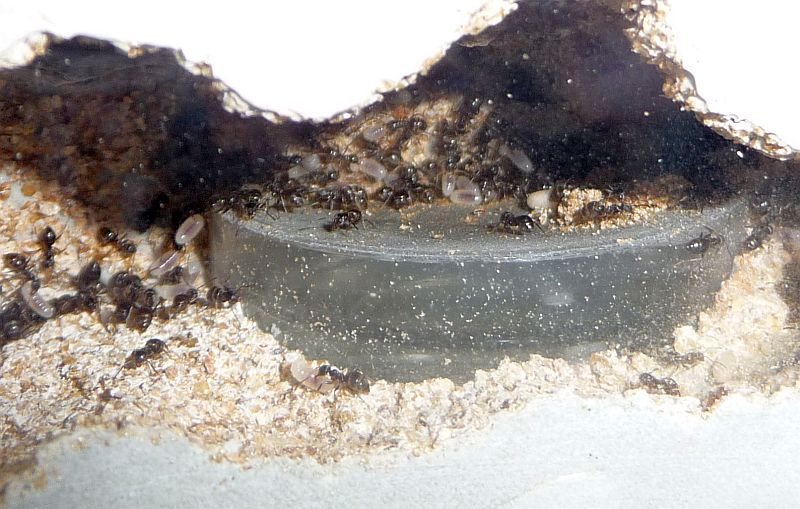
0 members, 1 guests, 0 anonymous users